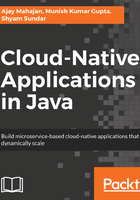
Lift and shift
Traditionally, enterprises started on their cloud computing journey with IaaS services. They did a lift and shift of the business application workloads from on-premises data centers and moved to the equivalent rented capacity on the cloud computing platform. This is the first wave of adoption of cloud computing platforms, where enterprises are shifted from a capital expenditure model to an operating expenditure model.
IaaS, as the names suggests, is focused on infrastructure—compute nodes, network, and storage. In this model, enterprises can take advantage of the elasticity of the cloud, where compute nodes can be added or removed based on the incoming demand or load. The virtual machine (VM) abstracts out the underlying hardware and provides the ability to scale the number of VMs up or down with just a few clicks.
Enterprises typically make use of IaaS in the first wave because of the following:
- Variability of resources: The ability to add/remove resources at will, which in turn allows more business agility
- Utility model: IaaS provides basic resources that are rented out on an hourly basis, allowing more predictability and an opex model